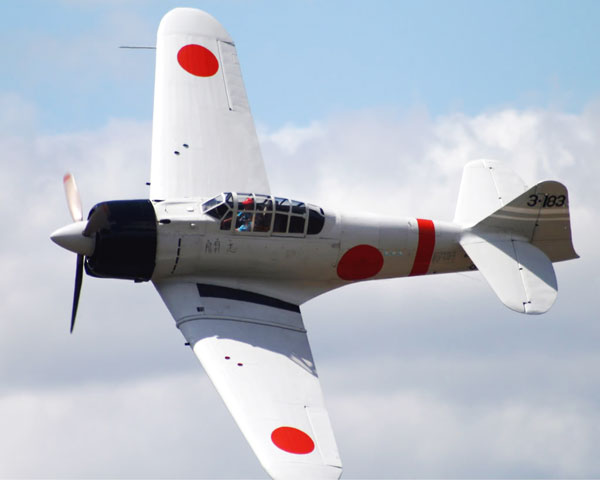

ġ04 A5M aircraft were modified to accommodate a two-seater cockpit. Each side claimed victory: the Chinese/Soviet side claimed 21 Japanese aircraft (11 fighters and 10 bombers) shot down with 50 of its own airmen killed the Japanese claimed only two G3Ms and two A5Ms shot down with no less than 40 Chinese planes shot down. The battle of 29 April saw 67 Polikarpov fighters against 18 G3Ms escorted by 27 A5Ms. Fierce air battles in 1938, especially on 18 February and 29 April, ranked among the largest air battles ever fought at the time. The A5M's most competitive adversary in the air was the Polikarpov I-16, a fast and heavily armed fighter flown by both Chinese Air Force regulars and Soviet volunteers. The Mitsubishi team continued to improve the A5M, working through versions until the final A5M4, which carried an external underside drop tank to provide fuel for extended range. A5M's escorting the then-modern but vulnerable Mitsubishi G3M bombers in raids effectively turned back defense by the Chinese Nationalist air force. Though armed with only a pair of 7.7 mm machine-guns, the new fighter proved effective and damage tolerant, with excellent maneuverability and robust construction. Even so, the A5M was the better of every fighter aircraft it encountered. Īn A5M from the aircraft carrier Akagi in flight with an external fuel tank (1938 or 1939).Ĭhinese Nationalist pilots, particularly those flying the Curtiss Hawk III, put up a valiant fight against the Japanese. The aircraft entered service in early 1937, soon seeing action in pitched aerial battles at the start of the Second Sino-Japanese War, including air-to-air battles with the China Air Force's Boeing P-26C Model 281 "Peashooters" in what was the world's first-ever aerial dogfighting and kills between monoplane fighters built of mostly metal. Mitsubishi, busy turning the Ka-14 into the A5M, submitted a minimally changed aircraft as the Ki-33, this being defeated by Nakajima's competing aircraft, which was ordered into service as the Ki-27. The Army then produced a specification for an improved advanced fighter to replace the Ki-10. While this demonstrated similar performance to the Navy aircraft and hence was far faster than the IJAAF's current fighter, the Kawasaki Ki-10 biplane, the type was rejected by the army owing to its reduced maneuverability. With the Ka-14 demonstrating excellent performance, the Imperial Japanese Army Air Force ordered a single modified prototype for evaluation as the Ki-18. The second prototype was fitted with a revised, ungulled wing, and after various changes to maximize maneuverability and reduce drag, was ordered into production as the A5M. The aircraft far exceeded the requirements of the specification, with a maximum speed of 450 km/h (279 mph) being reached. The first prototype, powered by a 447 kW (600 hp) Nakajima Kotobuki 5 radial engine, flew on 4 February 1935. The resulting design, designated Ka-14 by Mitsubishi, was an all-metal low-wing fighter, with a thin elliptical inverted gull wing and a fixed undercarriage, which was chosen as the increase in performance (estimated as 10% in drag, but only a mere 3% increase in maximum speed) arising from use of a retractable undercarriage was not felt to justify the extra weight. Mitsubishi assigned the task of designing the new fighter to a team led by Jiro Horikoshi (later responsible for the famous A6M Zero). This 9- shi (1934) specification produced designs from both Mitsubishi and Nakajima. In 1934, the Imperial Japanese Navy prepared a specification for an advanced fighter, requiring a maximum speed of 350 km/h (220 mph) at 3,000 m (9,840 ft) and able to climb to 5,000 m (16,400 ft) in 6.5 minutes.


 0 kommentar(er)
0 kommentar(er)
